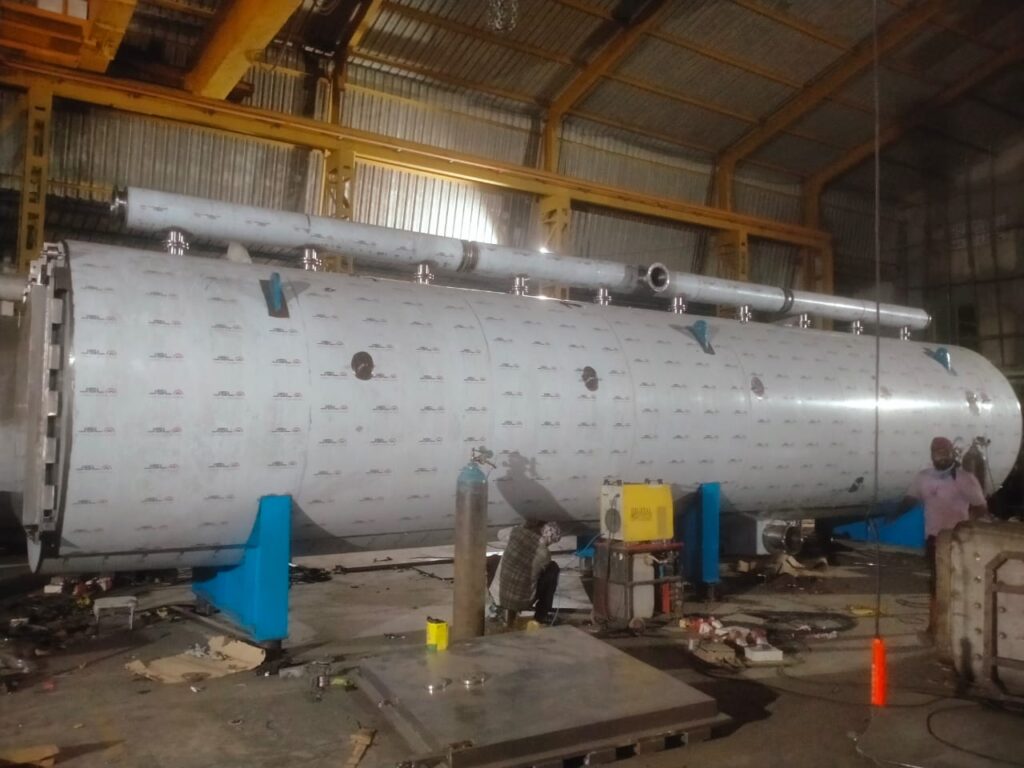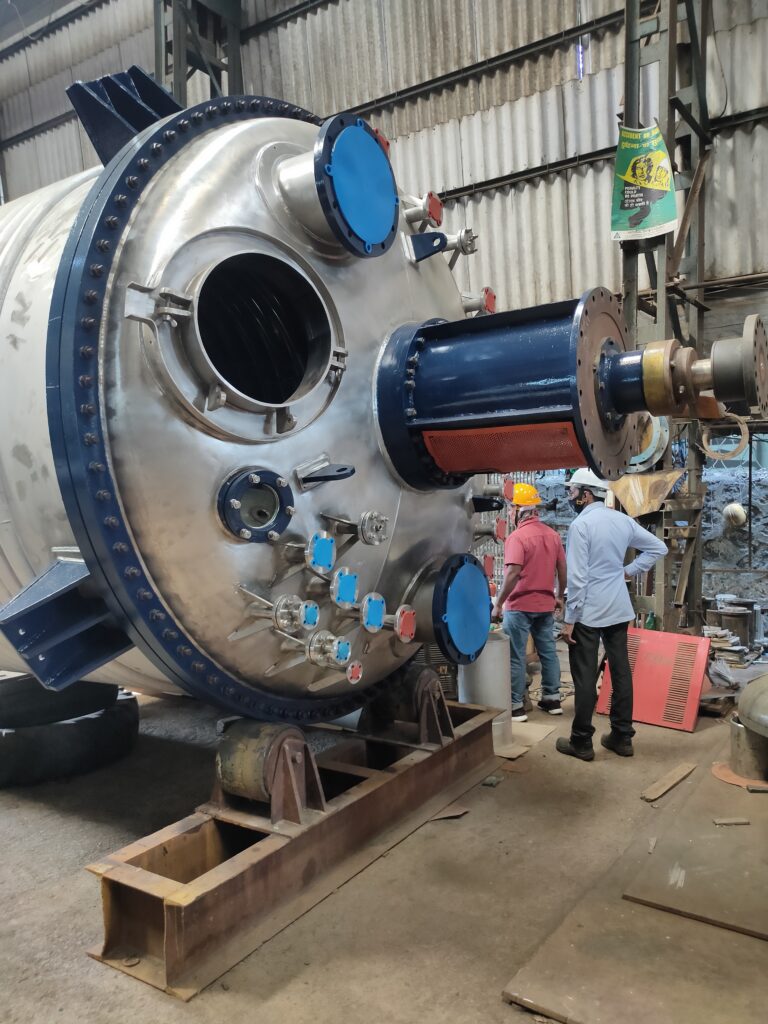Manfacturer of Superheater Water Spray Sterilizer – BE&C PROCESS EQUIPMENTS IN 2025
BE&C PROCESS EQUIPMENTS manufacturer of Superheater Water Spray Sterilizer ### Introduction Sterilization is an essential process across many industries, particularly in food processing, pharmaceuticals, and medical devices. Among various sterilization methods, the superheater water spray sterilizer is an efficient and effective technology that utilizes steam and high temperatures to eliminate pathogens and ensure product safety. This article will delve into the workings of a superheater water spray sterilizer, exploring its design, functionality, applications, advantages, disadvantages, and operational considerations. ### Overview of Sterilization Concepts **Sterilization Process** Sterilization refers to any process that eliminates (removes) or kills all forms of life, including transmissible agents like bacteria, viruses, spores, and fungal hyphae. Various methods exist, including physical methods like heat treatment and chemical methods like ethylene oxide exposure. Among these, heat-based sterilization is most commonly employed, particularly for products that can withstand high temperatures. **Superheating Steam** Superheating involves heating steam beyond its boiling point (100°C at standard atmospheric pressure) without an increase in pressure. This process has several advantages; superheated steam retains more energy than saturated steam, allowing for more effective heat transfer and improved efficiency in sterilization applications. It also reduces the condensation phenomenon, making it suitable for applications requiring rapid heating and drying. **Water Spray Sterilization** The water spray method involves the application of high-temperature water mist or spray onto products or surfaces that need to be sterilized. This method is particularly effective in evenly distributing heat while mitigating the risks of overly concentrated hot spots that may cause product degradation. ### Components of a Superheater Water Spray Sterilizer 1. **Boiler/Steam Generation Unit** – Responsible for generating steam by heating water using various energy sources (e.g., natural gas, electricity). 2. **Superheater** – A heat exchanger that elevates the temperature of the generated steam to superheated levels, increasing its effectiveness for sterilization. 3. **Water Spray System** – Comprises nozzles that convert sterilizing water into a fine mist, allowing for even distribution on surfaces. 4. **Sterilization Chamber** – The environment where products are exposed to superheated water spray for a specified duration. It includes racks or conveyors for easy loading and unloading of items. 5. **Control and Monitoring System** – Maintains parameters such as temperature, pressure, time, and humidity through automation, ensuring consistent sterilization conditions. 6. **Drainage and Filtration System** – Removes contaminated water and particulates after the sterilization process, ensuring continuous operation and cleanliness. 7. **Cooling System** – Sometimes included to reduce temperatures post-sterilization to prevent product damage. ### Working Mechanism of Superheater Water Spray Sterilizer #### Step 1: Steam Generation The process begins within the boiler, where water is heated in a controlled environment, turning it into saturated steam. The operator sets the desired temperature and pressure parameters. Once the water reaches its boiling point, steam is formed and channeled to the superheater unit. #### Step 2: Superheating In the superheater, the saturated steam is further heated under controlled conditions to reach superheated steam temperatures, typically between 120°C and 180°C, depending on the requirements of the sterilization process. The superheated steam exits the superheater and enters the sterilization chamber. #### Step 3: Water Spray Mechanism Simultaneously, water is heated to a predetermined temperature, usually close to the boiling point. The water then passes through a series of atomizing nozzles in the water spray system, transforming it into a fine mist. This mist mixes with the incoming superheated steam. #### Step 4: Sterilization Chamber Operations Once in the sterilization chamber, the superheated steam and water mist come into contact with the surfaces of the items to be sterilized. The high thermal energy from the superheated steam and the rapid evaporation of the sprayed water create a highly effective sterilizing environment. The equal distribution of steam and water mists enhances heat transfer, efficiently raising the temperature of the surfaces quickly, thus eliminating microorganisms. #### Step 5: Monitoring and Control Throughout the sterilization process, the control and monitoring system ensures consistent conditions. Sensors track temperature, pressure, humidity, and time, adjusting the input/output as necessary for optimal performance. This real-time data ensures that sterilization is effective and reduces the risk of log or under-processing. #### Step 6: Post-Sterilization Cooling After a defined sterilization cycle, the system may employ a cooling mechanism to reduce the temperature within the sterilization chamber. Cooling is crucial to prevent thermal shock that could damage sensitive items. The cooling can be achieved through fans or the introduction of ambient air. #### Step 7: Drainage and Cleanup Once sterilization is complete and cooling is achieved, the filtration and drainage system kicks in, removing any contaminated water and particles from the process. This ensures that the chamber is clean for the next cycle and reduces the risk of cross-contamination. ### Applications of Superheater Water Spray Sterilizer Superheater water spray sterilization finds extensive application in various sectors: 1. **Food Industry** – **Canned Foods**: Effective in sterilizing cans to prolong shelf life. – **Juices and Dairy Products**: Ensures microbial safety without flavor degradation. 2. **Pharmaceuticals** – Sterilization of equipment, vials, and syringes before filling with medication. – Ensures microbiologically safe environments in production lines. 3. **Medical Devices** – Products such as surgical instruments and implants that require complete sterilization before use. 4. **Laboratories** – Sterilizing glassware and tools used in laboratory settings to prevent contamination. ### Advantages of Superheater Water Spray Sterilizer 1. **Efficiency** – The combination of superheated steam and water mist allows for uniform heat distribution, resulting in faster sterilization cycles. 2. **Reduced Water Requirement** – The advanced water spray system minimizes the amount of water needed compared to traditional steam-only methods, making it environmentally friendly. 3. **Improved Product Integrity** – The rapid heating and cooling reduce the likelihood of product degradation, thereby preserving quality. 4. **Automation** – Automated monitoring and control systems enable consistent sterilization parameters, reducing human error and allowing for greater traceability. 5. **Versatility** – The system can be tuned to accommodate various products, making it versatile across different applications. ### Disadvantages of Superheater Water Spray Sterilizer 1. **Initial Investment Costs** – The initial capital outlay for a superheated
Manfacturer of Superheater Water Spray Sterilizer – BE&C PROCESS EQUIPMENTS IN 2025 Read More »


